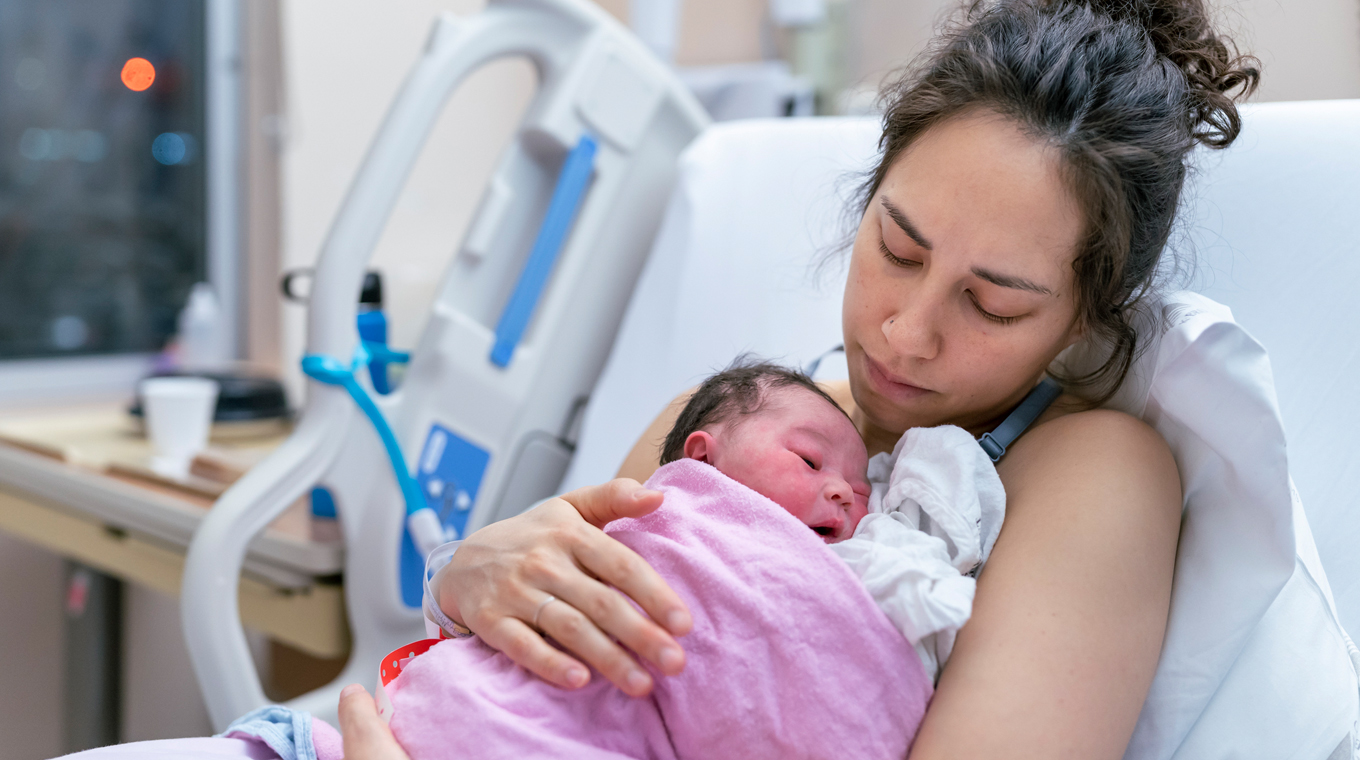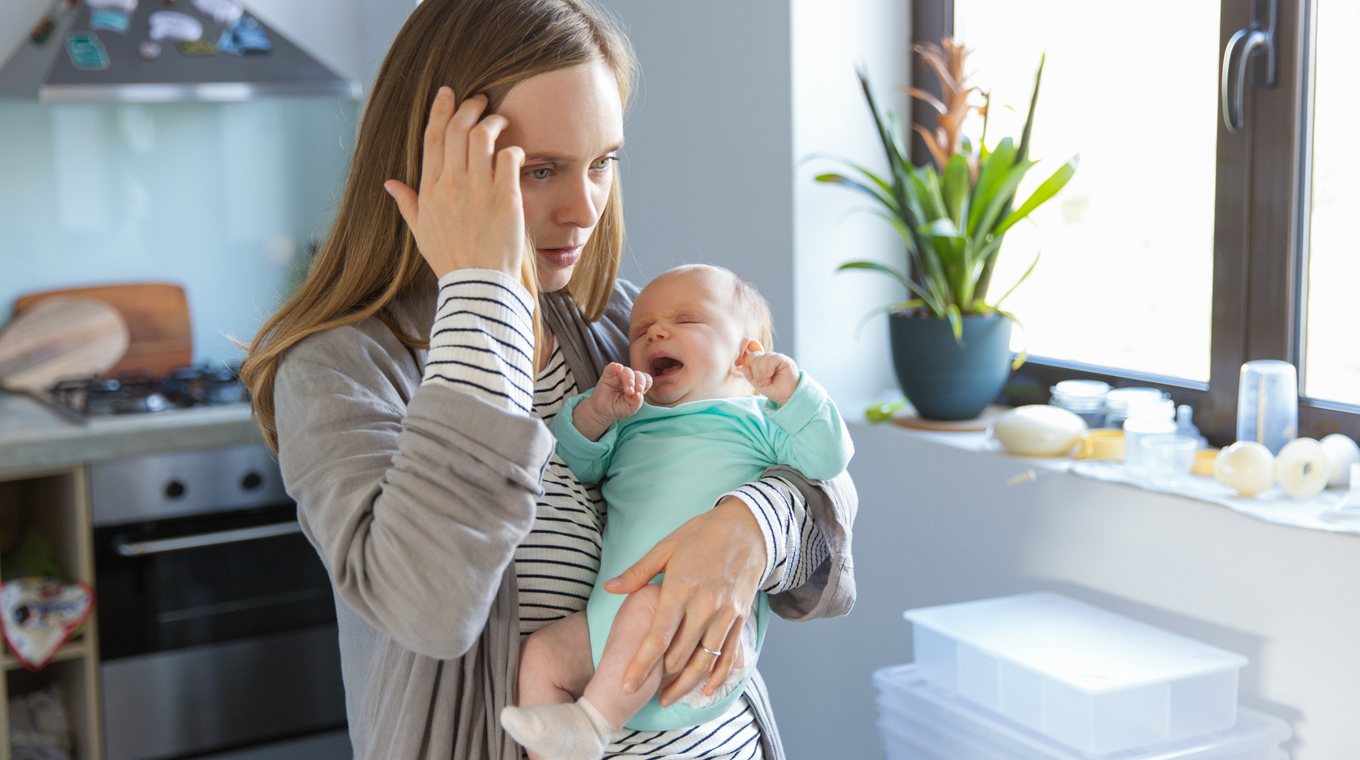In this article
Many people who have given birth have been cautioned about the risks and signs that come with preeclampsia during their pregnancy. But what we don’t talk about enough is postpartum preeclampsia.
What is postpartum preeclampsia? It's a condition that is marked by high blood pressure and increased protein levels in the urine. It can develop within two days of giving birth — or weeks later. While it's relatively rare, postpartum preeclampsia can be life-threatening if not quickly diagnosed and treated.
Causes of postpartum preeclampsia

The exact cause of postpartum preeclampsia is unknown. However, there are a few factors that can contribute to its onset. "Postpartum preeclampsia can be new onset, but your risk is increased if you had hypertension in the pregnancy,” Dr. Lindsay Nordwald, an OBGYN with the Hutchison Clinic, previously told Mom.com.
Additionally, a few other causes of postpartum preeclampsia can be related to your family history with the condition; being under 20 or over 40 years old, carrying twins, triplets, etc., or having either type of diabetes, according to Healthline.
Postpartum preeclampsia can be mild — with a slightly increased elevated blood pressure — to severe, putting the mother at risk of stroke, vital organ damage, congestive heart failure, pulmonary edema, coma, or even death. It also can lead to HELLP syndrome, a condition that results in hemolysis or the destruction of red blood cells, elevated liver enzymes, and low platelet count.
How is preeclampsia diagnosed?

So how is postpartum preeclampsia diagnosed? The diagnosis is very similar to preeclampsia which occurs during pregnancy, hallmarked by high blood pressure.
“As with preeclampsia that is diagnosed during pregnancy, postpartum preeclampsia is typically asymptomatic at first and can develop anywhere from 48 hours to four to six weeks following delivery,” Dr. Nordwald said.
After leaving the hospital, most women do not have their blood pressure checked again until their first postpartum checkup, which usually follows about six weeks after giving birth. So if you experience any of these symptoms following the birth of your child, it is critical that you immediately contact your health care provider.
Symptoms
According to Very Well Health, symptoms you should look out for are:
- Excess protein in the urine (proteinuria)
- High blood pressure (hypertension)
- Severe headache or migraine
- Blurred vision, seeing spots, or light sensitivity
- Pain in the upper right abdomen
- Swelling of the face, limbs, hands, and feet
- Nausea or vomiting
- Decreased urination
- Rapid weight gain
“I had no blood pressure problems during my first and second pregnancies, but my second involved an emergency c-section," mom of two Danielle G. told Mom.com. "On my last day in the hospital, literally at my last vital check before discharge, my blood pressure was through the roof! The hospital did discharge me, but I had to go to my OB’s office every day for weeks for blood pressure checks. Thankfully it was managed easily with medication and resolved itself in about two months.”
Postpartum preeclampsia treatment

When it comes to postpartum preeclampsia treatment, it’s most often done with medication. “The treatments for postpartum preeclampsia are similar to those used for preeclampsia during pregnancy,” Dr. Nordwald said.
“If a mother's blood pressure is dangerously high, she likely will be given medication to lower it, and magnesium sulfate may also be given to prevent seizures,” Nordwald explained.
“I had a c-section, and my OB found postpartum preeclampsia at my three-week follow-up. I had bad headaches, and my ankles were swollen as well. Then the nurse took my blood pressure, and it was dangerously high," mom Kirbie G. shared with Mom.com. "The doctor gave me medicine in the office to bring it down, but then put me on high blood pressure medication for the following month. I had to check my blood pressure three times a day and submit the numbers through an app to my provider.”
Once diagnosed and treated, the condition can take anywhere from one week or more to resolve. Sometimes this might require mothers to stay in the hospital longer, or can result in being readmitted after going home.




